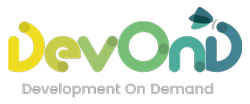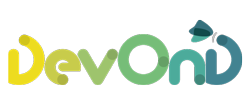#tools
DevOnD
Our international nature allows us to integrate, change and modulate the most innovative teaching methods available in the global market. Bearing in mind the needs identified, we choose the most appropriate tools to reach the objectives during the training. We are constantly looking for new tools to support cultural and generational changes.
MODELS
Every one of us has their own way of perceiving information, of communicating, taking decisions and managing problems. The Ned Herrmann model speaks of the preferences of the brain that are most natural to us, and that, once we understand them, improve both our interpersonal relationships and those in our working life.
John Whitmore, in his coaching method, identifies four phases able to improve the performance of the company and rationalise the corporate strategic process: "G" for Goal, the phase of fixing objectives; "R" for Reality, the analysis of the current context; "O" for Options, what is useful for the process; "W" for Way Forward, the phase in which the action plan is defined.
Coaching is a partnership with the clients that, through a creative process, stimulates reflection, inspiring them to maximise their own personal and professional potential and improve both their performance and the quality of their life. Coaching works on the development of potential and the re-dimensioning of internal interferences (most of which are linked to our fears), as well as on challenging ourselves (becoming aware of what we are doing). The coaching client is a person who wants to reach one or more of the following points: > a higher level of performance > a higher level of learning > a higher level of satisfaction ICF Certification
This tool is based on a theory according to which there are 9 different personality types - the so-called Enneatypes. These are not static and unmoving, but thanks to a specific process of growth, they can change and evolve. Every personality has its own way of relating to others, reacting to events and personal limits, as well as development paths that are recommended or discouraged.
This method, created by Dr. Feuerstein, shows how, through doing a few exercises, it is possible to develop and improve our own cognitive abilities. This allows us to strengthen our interpersonal skills, reason more quickly but also in a more flexible way, react in a more organised and effective way. A true brain training that hones our skills and challenges us to do better.
This model allows us to explore and understand better our emotions in order to use them more strategically. Analysing the three areas of Emotional Intelligence - Self Awareness, Self Management e Self Direction - we can integrate our innate personal abilities with management and leadership skills.
The theory created by Otto Scharmer is a powerful, practical method, that allows us to reinforce charisma, innovative abilities and creativity in individuals, teams and companies. One of the most innovative models available to everyone to stay competitive, be open to new ideas and be able to manage any type of change.
According to the theory of Hersey and Blanchard, there is not only one style of leadership, but different models, that can be adopted depending on the situation. The style of leadership, must therefore be adapted to the team with whom the leader must interact, the level of maturity of the various members, using the appropriate communication style.
The method developed by Thomas Gordon is aimed at acquiring the skills necessary to promote a collaborative model of leadership. It is a tool that puts human values in first place, favoring creativity, the free expression of one's own individuality and active participation.
This is a psychological theory widely adopted in the training field, above all by managers and senior staff. It is an important resource in the training path in relation to interpersonal communication, group work, the personality development and the management of human resources as a winning leader.
Neuro Linguistic Programming is a method developed by Richard Bandler and John Grinder, that deals with the influence of mental programs in our linguistic skills. It is an approach that is able to explain the link between the communication and personal development of every individual.
This model, drawn up by Geert Hofstede, speaks of the five dimensions or five cultural values that are part of every person. They are fundamental values of every country and culture, that inevitably influence a person's behaviour, their reactions and organisational methods.
Edward Hall's iceburg model of culture helps us to analyse and describe the aspects and the rules of every culture, whether they are on the surface or invisible. The iceberg represents these set of characteristics, where the tip is the most visible part, whilst the part which is underwater is hidden.
TOOLS
In this case we are referring to a series of training tools that we have consolidated and implemented over the years. On the basis of the training needs of our clients, we use case studies, focus groups, role plays and metaplans.
This learning process takes place with actions and experiences of situations, tasks and roles. The person involved, in fact, putting on "show" their own resources and skills in order to reach the objective, learns how to tackle situations of uncertainty developing adaptive and problem solving behaviours.
Social experiential training is a method aimed at developing communication skills though the use of creative metaphors and other tools from various fields. The common point of all of them is the energy (the ability to adapt) that people use to interact and integrate in a new context.
It is a training method that applies the principles, techniques and typical tools used in games in a non-game training context, with the objective of implementing the learning of operative skills and the use of strategies aimed at building constructive relationships in the world of work.

Our organization is certified for the activity of "Design and delivery of training orientation and consulting services” ISO 9001:2015 Quality Management System Scope(s) 35.


